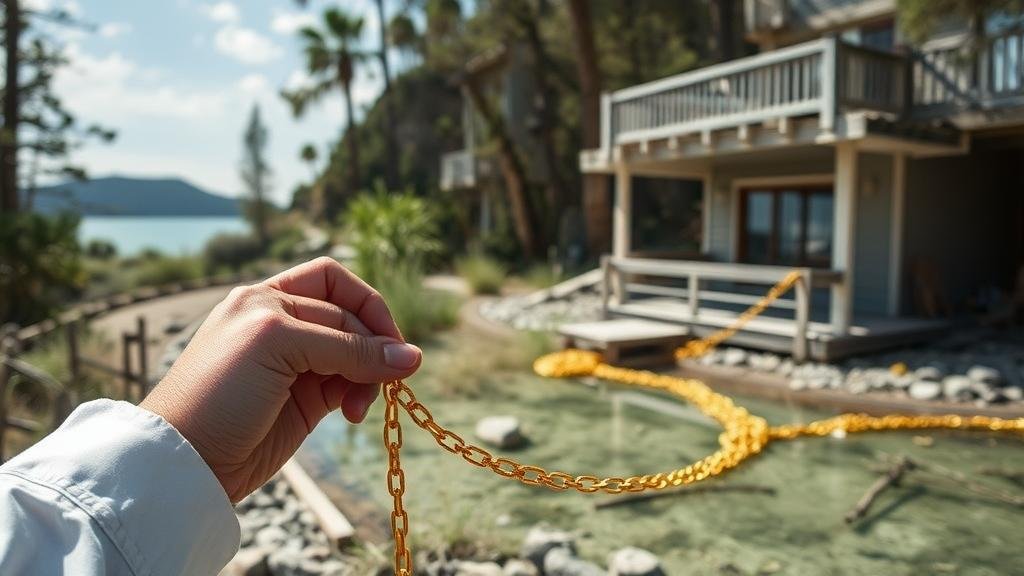Detecting for Gold Chains and Rings in Abandoned Summer Resorts
Introduction
The allure of detecting for gold chains and rings in abandoned summer resorts combines the thrill of treasure hunting with historical exploration. These once-popular destinations often hold remnants of their former glory, presenting an opportunity for adventure seekers and hobbyists alike. This article delves into the methodologies, equipment, historical context, and best practices for successful metal detecting in these unique venues.
The Historical Context of Abandoned Summer Resorts
Many coastal and lakeside summer resorts in the United States saw a surge in popularity during the late 19th and early 20th centuries. But, with the rise of urbanization, economic shifts, and the allure of international travel, many of these resorts fell into disrepair. For example, the Catskills region of New York boasted over 500 resorts in the 1950s, but fewer than 30 remain operational today.
Understanding the history of these resorts can significantly enhance the metal detecting experience. Artifacts found in these areas often tell a story of the people who frequented them, their lifestyles, and the social dynamics of their time.
Essential Equipment for Gold Detection
Detecting for gold rings and chains requires specialized equipment tailored for the task, which can be categorized into detectors, digging tools, and protective gear.
Metal Detectors
Choosing the right metal detector is paramount. For gold detection, you should consider models that operate at higher frequencies, ideally between 18 kHz and 60 kHz, as they are better suited to detecting small gold items. Some popular models include:
- Minelab Equinox 800: Known for its versatility, this model can be used in a variety of terrains.
- Garrett AT Gold: In particular designed for prospecting, it offers sensitivity to small gold targets.
Digging Tools
Essential digging tools include spades, trowels, and sand scoops. A hand trowel, for example, helps when working within the confines of a reduced area, especially around delicate structures that can’t be damaged.
Protective Gear
As you explore, it is vital to prioritize safety. This includes wearing gloves to avoid injury from sharp objects and using knee pads for comfort while digging.
Techniques for Effective Detection
Finding gold chains and rings requires patience, strategy, and a keen understanding of the terrain.
Understanding Ground Conditions
Begin by assessing ground conditions. Wet sand is more challenging for detectors due to mineralization but can yield better results. On the other hand, dry soil often holds less interference but may require extra effort to sift through debris.
Using a Grid Method
The grid method is an efficient way of covering ground methodically. Marking off a grid pattern allows you to ensure that no area is overlooked. After completing one section, simply move on to the next, providing a comprehensive sweep of the area.
Timing Your Searches
The best times for detection are during low tide at beaches or after heavy rain in forested areas, which can expose previously hidden items. These conditions can also enhance the sensitivity of your detector, making it easier to locate small gold pieces.
Legal and Ethical Considerations
Before embarking on your treasure hunt, its essential to be aware of local regulations governing metal detecting. Permits may be required, especially in state parks or historical sites. For example, many states prohibit digging in designated historical areas to preserve their integrity.
- Always check local laws and obtain necessary permissions.
- Respect “no digging” signs to avoid fines or legal repercussions.
Case Studies: Successful Finds
Numerous diggers have had remarkable success in abandoned summer resorts. One notable case occurred in the 1990s when a group of metal detector enthusiasts uncovered a gold bracelet and several rings buried beneath the remnants of a collapsed cabana in a now-abandoned resort in Michigan.
In another instance, a vacationer turned weekend treasure hunter discovered a cache of gold rings at a former summer retreat in the Adirondacks, highlighting the potential rewards that these excursions can yield.
Conclusion
Detecting for gold chains and rings in abandoned summer resorts can be an exciting activity that not only promises potential rewards but also enriches ones understanding of history. By equipping oneself with the right tools, understanding the lay of the land, and adhering to legal guidelines, anyone can embark on this rewarding journey. The stories unearthed from these old resorts are often as valuable as the treasures found, making the hunt itself worth pursuing.



